
Today, industries such as pharmaceuticals, food, cosmetics, and electronics are placing increasingly strict demands on quality and safety. Construction design cleanroom factories that meet GMP and ISO standards is no longer a choice, it has become a mandatory requirement for businesses striving for sustainable growth.
A factory certified with GMP or ISO is not only a testament to a company’s production capabilities but also a passport to both domestic and international markets. Behind every efficient production line lies a well-designed and properly constructed factory, where every element from movement flow and finishing materials to air handling systems is optimized to meet clean and safe standards.
In this article, BIC shares core insights to help businesses better understand cleanroom factory models, while also introducing a professional and efficient implementation process. We are committed to accompanying clients from the first drawing to the final handover of a compliant and fully operational project.
A cleanroom factory is a manufacturing facility designed and constructed according to stringent hygiene, environmental, and contamination control standards to ensure safe, stable, and high-quality production conditions. Unlike standard factories, cleanroom facilities require strict control of factors such as dust, humidity, pressure, temperature, microorganisms, and movement flow.
Key Features of Cleanroom Factories
- Optimized layouts to minimize cross-contamination and maintain hygiene.
- Use of easy-to-clean, antibacterial, and dust-free finishing materials.
- Carefully calculated HVAC systems, air filtration, and pressure control.
- Clearly defined functional zones with strictly controlled personnel and material flows.
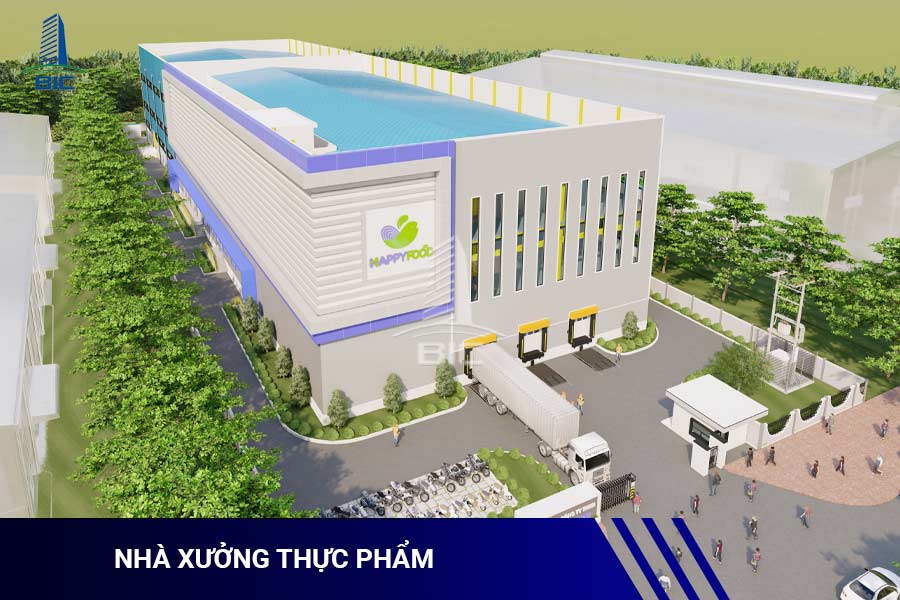
Cleanroom factories are widely used in industries with high production standards and stringent environmental controls:
- Pharmaceuticals: Ensure production of medicines under GMP conditions.
- Food Processing: Prevent cross-contamination and ensure food hygiene.
- Electronics & Semiconductors: Control dust and static during component assembly.
- Cosmetics: Maintain cleanliness and stability during manufacturing and packaging.
To effectively build a cleanroom factory, compliance with GMP (Good Manufacturing Practice) and relevant ISO standards is essential:
- GMP: Defines design and operational principles that ensure product quality and consumer safety.
- ISO Standards (e.g., ISO 14644, ISO 9001, ISO 22000): Support production environment control, quality management processes, and food safety systems.
To construct a cleanroom factory that meets GMP and ISO standards, businesses must follow a well-defined, coordinated process from site assessment through design, construction, and handover. Each step must adhere to modern design principles and suit the specific production industry.
The first stage involves on-site evaluation of land conditions such as area, wind direction, drainage, and zoning layout. Based on this, the experts propose an optimized factory design tailored to production needs and GMP standards.
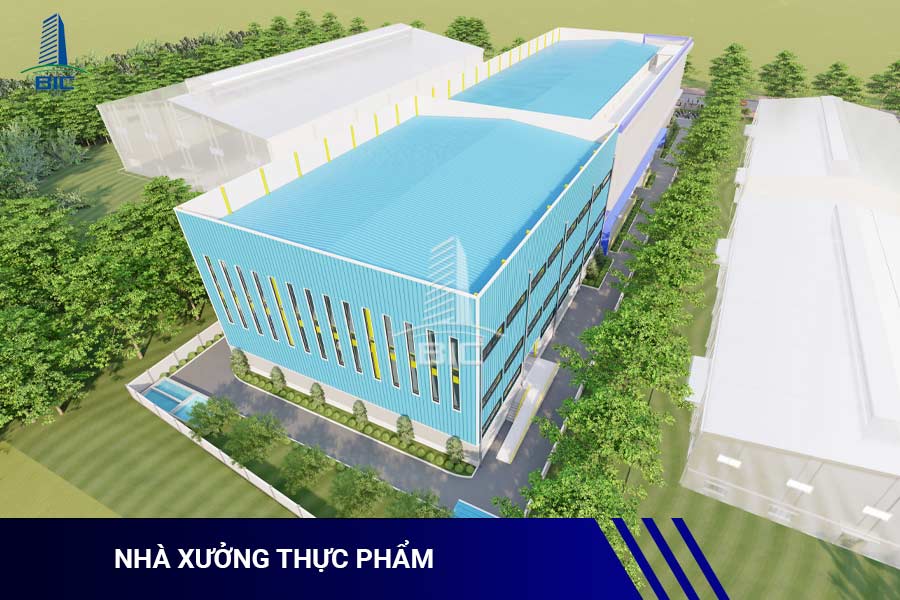
After finalizing the layout, architects and engineers will develop detailed drawings including:
- Functional zoning layouts
- HVAC system design (filtration, pressure control)
- Electrical, plumbing, lighting, fire protection, and wastewater treatment systems
- Selection of sanitary-grade finishing materials
All designs must follow a one-way movement principle, clearly separate clean and contaminated areas, and comply with GMP and ISO standards.
The design and construction unit will assist investors in preparing construction permit applications, environmental impact assessments (EIA), and ensure smooth, legally compliant implementation.
The construction team will carry out the build in accordance with approved designs. Key construction elements include:
- Factory structure
- Cleanroom systems
- Technical room equipment and air handling devices
- Finishing of packaging areas, storage, technical corridors, etc.
Material selection and construction supervision are closely monitored to meet technical and sanitary standards.
Once construction is complete, the factory undergoes quality checks, cleanliness testing, and evaluation of HVAC, lighting, and ventilation systems. Businesses are supported with trial operation, maintenance training, and assistance in applying for GMP or ISO certification if needed.
Designing a cleanroom factory goes beyond aesthetics or space optimization. It demands strict adherence to GMP and ISO standards to ensure a safe, stable, and controllable production environment. Key considerations include:
Movement flows for personnel, materials, finished products, and waste must not intersect. For example, raw materials should have a separate route to avoid contact with finished goods, reducing microbial contamination risk.
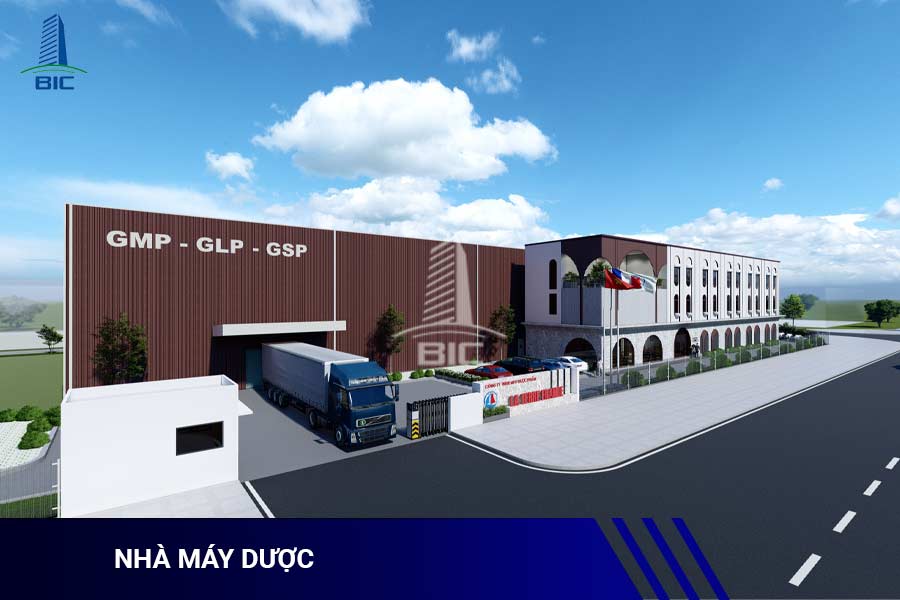
All surfaces must be finished with materials that do not generate dust, resist moisture, and prevent bacterial growth:
- Walls and ceilings: typically use insulated panels coated with epoxy or PU paint.
- Floors: must be smooth, crack-free, and made of antibacterial materials like industrial epoxy or vinyl.
- Doors and barriers: should be airtight, use automatic systems or airlocks to control air pressure and cleanliness between zones.
HVAC is central to air quality control. A GMP-compliant HVAC system must ensure:
- Positive pressure between clean and less-clean zones to prevent contaminated air backflow.
- HEPA filtration to eliminate microorganisms and fine dust.
- Precise control of temperature, humidity, and airflow for a stable environment.
Poor HVAC design can result in high retrofit costs later.
Lighting must meet required illuminance (lux) levels to ensure working conditions and quality checks. Lights should not produce heat or shadows that could hide dirt or bacteria.
Drainage systems should be floor-embedded, clog-resistant, and easy to clean. Waste and wastewater storage areas must be logically located to avoid disrupting production. In industries like food or cosmetics, localized wastewater treatment systems should be considered.
A common mistake is building the factory first and applying for certification later, resulting in costly redesigns. Integrate technical standards from the start, including:
- Cleanroom height
- HEPA filter locations and airflow design
- Wall, ceiling, and floor structures
- Airlocks, pass boxes, etc.
Also, plan for future scalability to reduce upgrade costs.
More than a technical task, building a cleanroom factory is a strategic investment that boosts production capacity, facilitates access to international markets, and reduces long-term operating costs.
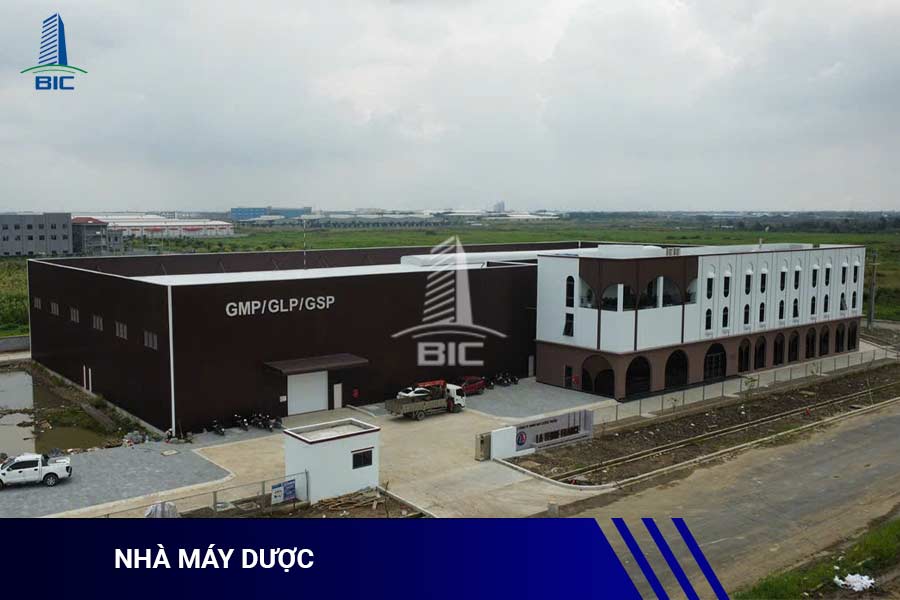
Investing in a compliant cleanroom factory offers clear benefits across product quality, operational efficiency, brand value, and market expansion:
Strictly controlled environments result in consistent, error-free products with longer shelf life especially critical in pharmaceuticals, food, and cosmetics where consumer health is paramount.
GMP and ISO certifications demonstrate production competency and are often prerequisites for entering global supply chains. Major partners, particularly in pharma, food, and semiconductors, only work with facilities that meet international standards.
While upfront investment is higher, businesses save over time by:
- Reducing production errors and waste
- Lowering cleaning, maintenance, and environmental control costs
- Extending equipment lifespan due to stable environments
Retrofitting a non-compliant facility often costs more than doing it right from the start.
Industries like pharmaceuticals, cosmetics, and medical devices require GMP or ISO certification to obtain licenses for manufacturing, distribution, or export. With a compliant design and build, the certification process becomes faster and more straightforward.
A standardized facility improves operational efficiency and raises the company's tangible asset value. In cases of fundraising, transfer, or joint ventures, a compliant factory is a strong advantage, showcasing professionalism and operational readiness.
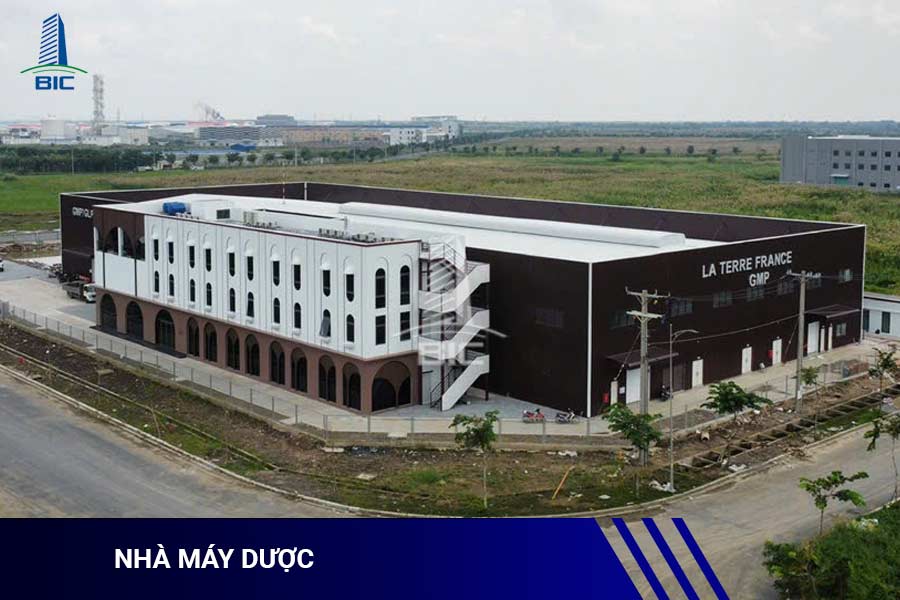
Not all construction firms are equipped to build GMP- and ISO-compliant cleanroom factories. These projects demand tight coordination between architecture, engineering, and industry standards. Choosing a technically proficient, experienced partner with a clear process helps minimize risks, save time, and optimize costs.
Why Choose BIC?
- Deep expertise in cleanroom factories: BIC has successfully delivered projects in pharmaceuticals, supplements, cosmetics, and electronics fields where hygiene and safety are non-negotiable.
- End-to-end solutions: From consulting, design, legal documentation, and construction to acceptance testing and GMP/ISO certification support.
- Skilled team of engineers and architects: Our professionals are well-versed in GMP, ISO standards, and the latest material technologies to deliver cost-effective and operationally efficient solutions.
- Commitment to timeline and quality: We follow approved designs, use certified materials, and implement strict supervision to ensure real-world outcomes match drawings.
Building a GMP- and ISO-compliant cleanroom factory is more than a technical requirement, it's a long-term investment strategy to boost production capacity, product quality, and market competitiveness. Every detail from layout and materials to HVAC, lighting, and environmental systems must be carefully designed and executed by a professional team.
As a trusted name in industrial factory design and construction, BIC is committed to delivering the best possible solutions. Contact us now for a free consultation, on-site assessment, and detailed quotation for your GMP- and ISO-compliant cleanroom factory.